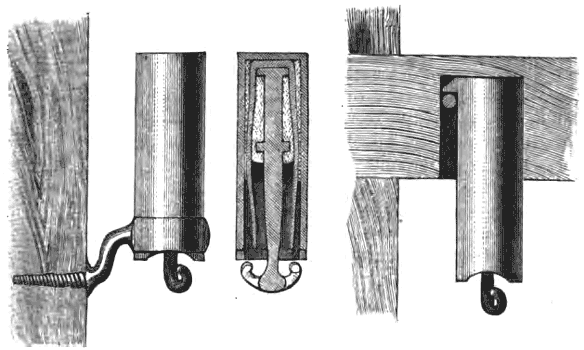[Book]
Publication: Reports of the United States Commissioners to the Paris Universal Exposition, 1867
Washington, DC, United States
vol. 4, p. 82-83
INSULATORS AND INSULATION.
THE BROOKS PARAFFINE INSULATOR.
This insulator was exhibited, but is not in the catalogue. The Brooks insulator has a wide popularity. The tests of its efficiency, in comparison with many other insulators, show it to be deserving of the popularity it has acquired. It is extensively sought after on European lines. The only plausible drawback is the apprehension that the paraffine may deteriorate in the course of time. Hitherto, however, it has stood the test of years. Whether the objection is a substantial one time alone can determine. In conversation with some of the jurors at the Exhibition, this insulator was spoken of as the best that had been submitted to them. There is an insulator in use in India called the "Brooke Insulator," which must not be confounded with the Brooks insulator. In alluding to the former, the director general of telegraphs in India, in his return to Parliament, says: "I attribute the bad working of the better Indian lines to the department being inflicted with the Brooke bracket and insulator, both of which are most thoroughly unfit for the purpose for which they were designed." The American Brooks insulator is a totally different invention.
 |
| Fig. 16. |
It is constructed as follows: An iron stein or wire holder is cemented into a glass bottle or vessel; the bottle is again cemented into a cylindrical iron shield. The cement is composed of sand and sulphur. The cement and cast iron are saturated with paraffine, and the whole surface of the insulator covered with paraffine.
Sulphur of itself is a great dielectric, or insulating material when dry, but upon crystallizing, it checks and becomes porous, admitting moisture when exposed to the air, which is prevented by the use of paraffine, as herein stated. Paraffine is repellent of moisture, and prevents it settling in continuous surface upon the insulator. In form the insulator has great length and small sectional area in order to obtain greatest current resistance.
Either point of the hook is nearer the iron shield than any other part of the hook, consequently surcharges of atmospheric electricity pass outside the glass and prevent fracture or injury to the insulator.
